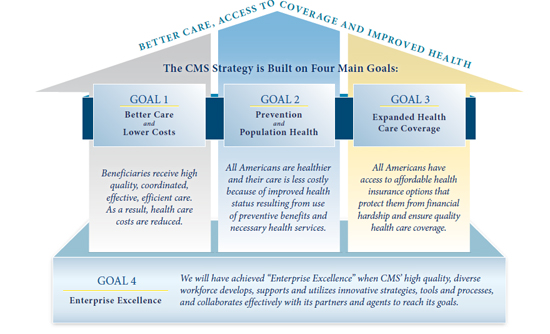January  2015
2015
HIM's Future in Population Health Management
By David Owen
For The Record
Vol. 27 No. 1 P. 8
In August 2013, Bonnie Cassidy, MPA, RHIA, FAHIMA, FHIMSS, past president of AHIMA, published a noteworthy article in the Journal of AHIMA regarding population HIM (PHIM). While the article was published too close to the 2013 AHIMA convention to impact the conference, it's reasonable to expect it would have influenced the 2014 meeting. But it didn't seem to.
While HIMSS 2014 was dominated by companies promoting data analytics to support population health, vendors at AHIMA 2014 hardly noted it. Plus, there were no educational tracks dedicated to PHIM at the AHIMA convention.
What's going on? Is AHIMA out of step with the health care industry?
Historical Context
The term "population health" can be traced to the World Health Organization's 1946 definition of health as "a state of complete physical, mental, and social well-being and not merely the absence of disease or infirmity." Previously referred to as disease management, population health now includes "intensive care management for individuals at the highest level of risk" and "personal health management … for those at lower levels of predicted health risk," according to Home Health Care Management & Practice.
The shift in how the Centers for Medicare & Medicaid Services plans to pay health care organizations is driving traditional providers to embrace the population health model. In the future, providers will be paid according to a capitated rate, meaning more efficient care equals better reimbursement (see diagram below). Also, because providers won't be able to pass along any costs due to an overabundance of care, profit margins will shrink.

— Source: CMS Strategy: The Road Forward 2013-2017. March 2013. http://www.cms.gov/About-CMS/Agency-Information/CMS-Strategy/Downloads/CMS-Strategy.pdf
Get the Word Out
How does this shift in payment structure affect HIM? The foundation of population health is information—lots of it. The greater the amount and specificity, the better to enable providers to understand the populations they manage.
By leading the conversion to ICD-10, HIM is at the forefront of this data revolution, according to Cassidy. The more effective HIM professionals are at relaying this fact to the leadership within their organizations, the more readily they will become part of strategic conversations.
What else can HIM professionals do to establish themselves at the forefront of the population health movement? Foremost, they can point out how poor data make it difficult to establish a worthwhile population health management program. Results will be skewed, leading to incorrect conclusions that all the algorithms in the world won't be able to overcome.
Information Governance
Many health care professionals can recall an instance when misinformation within an EHR led to poor quality of care and other mistakes. To address that concern, AHIMA recently released a set of information governance principles to guide the industry in how best to tackle the management, compliance, and control of data inside health care organizations. HIM professionals are well qualified to steward such an operation. In fact, the profession has steadily increased education and certification efforts and leveraged technology to transform more HIM professionals into an information governance role.
Cognitive Systems
In some cases, technologies such as speech recognition and computer-assisted coding (CAC) have helped HIM departments become more efficient and effective. As a result, HIM professionals now can take on a more strategic role within their organizations.
These cognitive systems are part of a shift that is occurring across many industries. Analyst firm IDC has identified what it refers to as the third platform, of which cognitive systems are a key pillar. Speech recognition, CAC, and data analytics fall into this category.
Speaking about broad trends such as the third platform concept helps HIM professionals be viewed as thought leaders who can hold their own in strategic discussions regarding how technology can tackle PHIM. A November 2013 KLAS report asked 78 providers what they valued in population health management products. The top five priorities were the following:
• risk management;
• clinical quality;
• patient-centered care;
• community building; and
• EMR optimization.
However, because the report characterizes EMR optimization as providers leveraging their investment as much as possible to achieve one or more of the other priorities, it can be argued that it's not technically a top-of-the-list item.
Limited by their workflow and database structures, EMRs are designed to be transaction oriented. As such, the technology is unable to deliver the massive amounts of nonclinical and payables data required to fulfill the complete vision of population health. Therefore, providers not only can't explain the care being delivered, but they are also unable to predict future trends and take steps to adjust accordingly.
The KLAS report fails to point out one of the key capabilities of population health solutions: consumer acquisition and retention, a service provided by technology vendors such as Optum and Predilytics. This may have occurred because providers were not asked about their level of involvement in shared risk payment plans, a priority for payers.
When selecting a population health vendor, the report recommends evaluating the following four functional areas:
• data aggregation;
• risk stratification;
• care coordination; and
• patient outreach.
AHIMA's information governance initiative clearly plays a role in data aggregation. Also, portions of patient outreach touch on release of information, a function that's typically the HIM department's responsibility. It's not that HIM can't deliver value to risk stratification and care coordination, but it's probably wiser for HIM professionals interested in getting involved with PHIM to play to the profession's strengths.
A Golden Opportunity
Industry leaders spearheading the charge for more HIM involvement in the information governance movement need the support of the entire profession. Doing so would help open the doors wider for those seeking to become PHIM experts.
As Cassidy pointed out, the systems to support this new world order are being defined today. HIM professionals need to take advantage of health care's new landscape. Forward-thinking HIM departments should determine how they could play a role in their organizations' future population health initiatives. Understand how the department's services add to the entire organization's bottom line and define the features lacking in the current system where HIM may be able to fill the void. Also, make vendors aware of these attributes. The best vendors will be able to provide affordable solutions that add value to the entire organization.
Population health is the future of health care, and the future of HIM is PHIM.
— David Owen provides strategic market intelligence and product management leadership to HIT companies. His Twitter handle is @deoiv.



